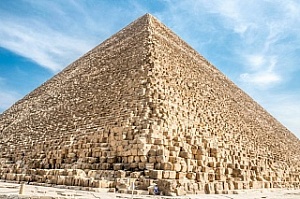In 2017, the international team of scientists Scan Pyramids found previously unknown areas in the Pyramid of Cheops by muon tomography of Egyptian pyramids. One of the developers of the Geant4 program that was used for this is Evgeny Chernyaev, a researcher at the Laboratory of Experimental High Energy Physics of TSU.
A hidden room is located above the large gallery leading to the
Chamber of the Pharaoh. It is not less than 30 meters long and about 15
meters high. The purpose of the room is not yet clear. This is the first
major discovery since the 19th
century in the Pyramid of Cheops, the only one of the Seven Wonders of
the World to survive to this day, and it was accomplished without
excavation.
- The Scan Pyramids used Geant4 tools for its research, and it's not
surprising,- commented Evgeny Chernyaev. - First, today Geant4 is the
most advanced, and therefore the most in-demand, program for modeling
the passage of particles through matter. Second, it is in the public
domain, and any user can download it from the site geant4.cern.ch and
install it on the computer.
Geant4 can be used to simulate the passage of cosmic particles through
the material of the pyramid. Cosmic muons are secondary particles that
are formed as a result of the collision of cosmic rays with atoms and
molecules of the earth's atmosphere. Muons easily permeate stone blocks
and are therefore suitable for muon tomography of such massive objects
as pyramids. If the object has a void, there will be a significant
increase in the flux of muons in the direction of the void.
- We have been developing the Geant4 program for more than 20 years,
and the scope of this program is constantly expanding. This is not only
high-energy physics, but also medicine, biology, chemistry, space, and
astrophysics. For example, in Japan it was used online during an
operation to irradiate a cancer patient. The total number of references
to the key publication on Geant4 has long exceeded 10,000, and it is
constantly growing, - said Evgeny Chernyaev.
TSU scientists are using the technology of muon tomography to create the newest detectors for the ATLAS collaboration at the Large Hadron Collider (LHC) at CERN. In addition, the staff of the Laboratory for Experimental High Energy Physics gives lectures and conducts practical classes on Geant4 in the campus courses of TSU.

